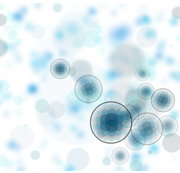Nano discussion
What do we mean, when we’re speaking of nanomaterials?
On October 18th 2011 the EU commission published a recommendation for a very broad definition of the term “nanomaterial” (2011/696/EU):
Nanomaterial means a
- natural, incidental or manufactured material
- which contains particles, in an unbound state or as an aggregate or as an agglomerate, where, for 50 % or more of the particles in the number size distribution one or more external dimensions is in the size range 1 nm-100 nm.
An additional criterion is:
- specific surface area by volume of the material must be greater than 60 m2/cm3
- a specific surface area lower than 60 m2/cm3, does not exclude a material from being classified as nanomaterial
This recommendation has currently no direct impacts. Legal effects and obligations do only arise if the definition is included in or referenced by regulations, directives and other legislative acts.
Given that there is no universal or standardised measurement method, it is difficult to prove if a substance is a nanomaterial in terms of the definition recommendation. The JRC-Report “Requirements on measurements for the implementation of the European Commission definition of the term 'nanomaterial'“ reviews measurement methods and key challenges for nanoparticle sizing in the regulatory context.
Pigments and Fillers – everything nano under the sun? 
Pigments and fillers add colour or specific properties to many products of our daily lives. They are not new: most of them are produced with unaltered methods since decades and have been used for a long time. Thus, pigments and fillers are traditional materials and not so-called new nanomaterials, nor are their properties new. Various pigments and fillers available on the market will now – solely based on the novel definition recommendation (2001/696/EU) – have to be considered as nanomaterials.
An inventory of nano products would basically have to list almost all everyday objects – an obvious absurdity. Thus, regarding the revision of the recommendation, the EU commission should reduce the scope of the definition. Additionally, if pigments and fillers are bound in a matrix material (e. g. plastics, coatings) or a paste it should have a beneficial impact on the subsequent legislation.
Scientists of the technical university of Dresden have studied this topic (effect of matrix material) in the FRINano project. The objective of this project was to establish a hands-on measurement technique for the quantification and characterisation of pigment nanoparticles, which might be released from coatings or plastics upon weathering and/or exposure to mechanical stress.
Project conclusions
- Pigmented coatings and plastics are often more resistant to abrasion or weather than the not pigmented ones.
- Free pigment nanoparticles have not been observed in the aerosol or grit.
- The pigment nanoparticles are still firmly bound in fragments of the matrix material or agglomerated/aggregated to larger structures
- The released particle numbers are within a range where no additional load of the environment with nano-sized pigments and fillers occurs.
- Consumer exposure to pigment nanoparticles can be ruled out within the whole product life cycle to the greatest extent.
Here you can find an additional article about the FRINano project:
http://iopscience.iop.org/1742-6596/429/1/012045
For detailed information, please refer to the following documents:
- Facts on the Nano Discussion in the Pigment and Filler Industry (Status: August 2017)
- Position Paper of the Pigment and Filler Industry in the Nano Discussion (Status: July 2022)
- The Pigment Industry - An old-established industry between classic pigments and nanotechnological products.
- VdMi brochure "Nano - The Measure of all Things"
- Small particles hit the big time. All things nano under the sun?

